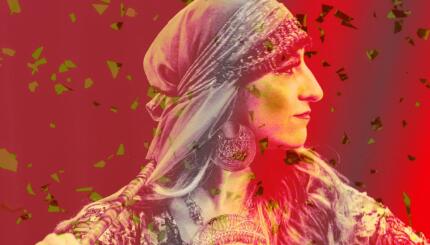Women being arrested for praying out loud at the Western Wall – it’s a story so shocking that it has managed to make headlines around the world. But the Western Wall is just one piece of a larger picture of religion and gender in Israel today. In fact, the threat to women’s well-being in Israel today, which comes from an increasingly radical religious power structure, finds expression in many areas. On public streets, on buses, in the government, in the army, in the courts, and in hospitals, women’s bodies are the objects of public scrutiny, debate and even violence.
Below are seven places where women’s bodily well-being has been threatened in Israel over the past several years because of growing religious radicalism:
(1)
Public buses.
Twenty years ago, there was no such thing as official gender-segregated buses in Israel. The first segregated line was established in 1997 between Jerusalem and Bnei Brak, as an experimental Egged pilot to appease
leaders threatening to boycott Egged. In 2001, after years of pressure, Egged added another route from Ashdod as well, and stores along the gender-segregated route were pressured to change their displays, remove mannequins, avoid the central bus station to avoid ‘immodest’ signs, and play only certain radio stations. Each year more gender-segregated lines were added – 11 in 2005, 30 in 2006, by January 2011, there were 128 lines. By 2011, there were over 150 lines. And the more lines there were, the more violence against women rose, from one reported violent incident in 2004 to a Transport Ministry report that showed bullying and threats of violence on 5% of all buses.
(2)
Public spaces.
Signs have been erected on public streets in Beit Shemesh, Jerusalem, and other cities, demanding that women walk on the other side of the street. Signs excluding women have been erected in many other public locations around the country, including cemeteries, health clinics, post offices, libraries, and even public universities. University gyms have asked women to leave at the request of religious male students, women singers have been asked not to sing in cities including the avowedly secular Modi’in. In some cases, this is accompanied by violence: women in Beit Shemesh have been beaten and have had rocks thrown at them and acid poured on them by haredi thugs for being in the wrong place at the wrong time.
(3)
Municipalities
. Gender-segregated municipal events have been held all around the country, including Rechovot, Safed, Jerusalem, Petach Tikva, and more. Women have been disinvited from performing, including singers being asked to leave the stage or having their microphones shut off and dancers who have been forced to wear shawl-like dresses to cover their dancing costumes. Some municipalities have published materials without any photos of women, including the brochure for the Jerusalem marathon.
(4)
Media
. The Kol Berama radio station not only refuses to air women’s singing, but also refused to allow women to be presenters, announcers or news readers, and would not let women callers speak. The Cnaan advertising company, which places ads on public buses, does not allow women’s faces to appear on the sides of buses in Jerusalem and certain other places. Similarly, companies and organizations ranging from Honigman to organ donation created special no-women ads for Jerusalem, Bnei Brak, Beit Shemesh and elsewhere
(5)
The
and government offices.
Women were disinvited from singing in the Knesset choir. The health ministry and education ministries have held all-male events – and in one case a leading female medical researcher was barred from walking on stage to accept a prestigious award from the health ministry because women were barred from the event. The Education Ministry also ran a separate ad campaign for Jerusalem and Bnei Brak in which women’s faces did not appear on billboards.
(6)
The IDF
. As pressure mounts to induct haredi soldiers, the IDF is under pressure to keep women hidden from certain places to make the army “comfortable” for haredi men. This includes plans to build an all-male training camp. According to reports, women have been removed as instructors following complaints from religious soldiers, other soldiers refused to take orders from their female infantry instructors, discussions were being held about limiting the roles of women in tanks and armory, in the Intelligence Corps, women were asked to teach only while standing behind a desk, and more.
(7)
Rabbinical courts
. There is arguably no place in Israel where women’s rights are more systemically trounced upon in the name of religion than the rabbinical courts. The current system for marriage and divorce leaves all Jewish women in Israel, regardless of religiousness, lifestyle, or volition, completely at the discretion of the ultra-Orthodox state-backed rabbinical courts. This situation has been chronicled by many great activists, and there are some band-aid solutions in place. But the fundamental situation in which haredi judges can ruin women’s lives according to their own constantly radicalizing perceptions of women remains in place. And this situation makes Israel a scary place for Jewish women to get married.
In my next post (Part 2), I will share 12 remarkable ways that women are fighting back and reclaiming power over body integrity and basic human rights in Israel.
The Visiting Scribes series was produced by the Jewish Book Council‘s blog, The Prosen People.
The Jewish world is full of debates. Get the latest in MyJewishLearning’s weekly blogs newsletter.

